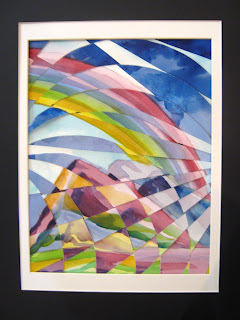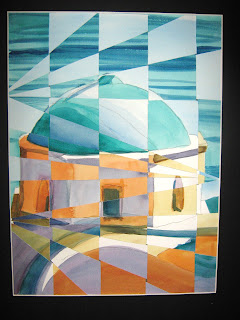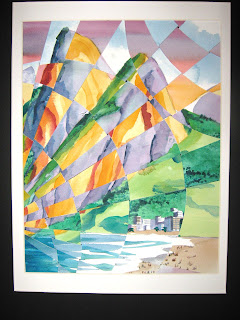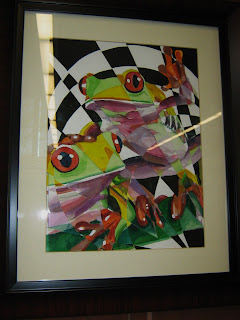
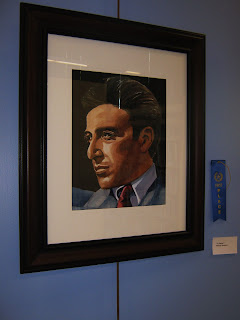
What I do is look for opportunities to practice my hobbies in public. Not in the classroom, not in front of my teacher, but in front of a real audience. There's lots of ways to go about this: enter contests, find a captive audience who will clap politely, or video whatever you are doing. Just knowing that it's being video will have the same effect. What's the point of doing it in public? To up your game. There is nothing to get your adrenalin involved like being in front of people for the newbie.
You'd think that I'd have gotten over my stage fright by now but that's not the case. This week I played a small concert on the guitar for my watercolor class. I did the same thing in front of my dad and one of his housemates at his assisted living facility. Being perfect at my level is not a realistic possibility, and these groups don't expect it. They just want to support you. Even though I knew everybody, I still had a pretty good case of butterflies going. And of course I had more fun than anybody else there. Once you've broken the ice and played in front of a "safe" crowd, your confidence is up and you can work toward playing in front of a lesser "known" crowd. Hey, we could play at a Borders or something. It's all about just getting in the water to learn how to swim. If you don't get in the water, you'll never swim.
I also entered an art contest this week. I didn't know whether the woven painting or the portrait would win. Most people thought the frogs were the slam dunk, but I wasn't 100% sold. I thought Al Pacino might win over adorability. He IS pretty adorable, too. And he won. So what does this accomplish? Did I get any money? No, I got a ribbon I don't get to keep. And I paid $30 to enter the two pieces (and join the Friends of the Dallas Public Library). But it upped my game! Now I'll enter more contests. AND I have another show scheduled in the spring for all my new portraits and woven paintings that I've been cranking out. Thanks to the Dallas Public Library.
How do you up your game with reading? Books on tape! I'm almost done listening to Jane Eyre at the office (I have one of those jobs that I can do while listening to books and watching the daddycam at my dad's house), I'm listening to The Unauthorized Biography of J. Edgar Hoover in the car, and on the train and at lunch and on the elliptical or in bed I read What Happy People Know or a Thomas Wolfe. So basically, this week I've upped my reading by doing it in public.
Why would you want to up your game? There's lots of reasons to do a hobby, but improving your skill is part of the deal. Plus, if you don't challenge yourself, it's not nearly as fun. There's lots of ways to keep your brain active, and learning a new skill (a new song, a new painting technique, a new exercise) is about the best. Watching TV is about the fastest way to turn your brain to mush. Think about it. We are all born with that particular skill mastered.

